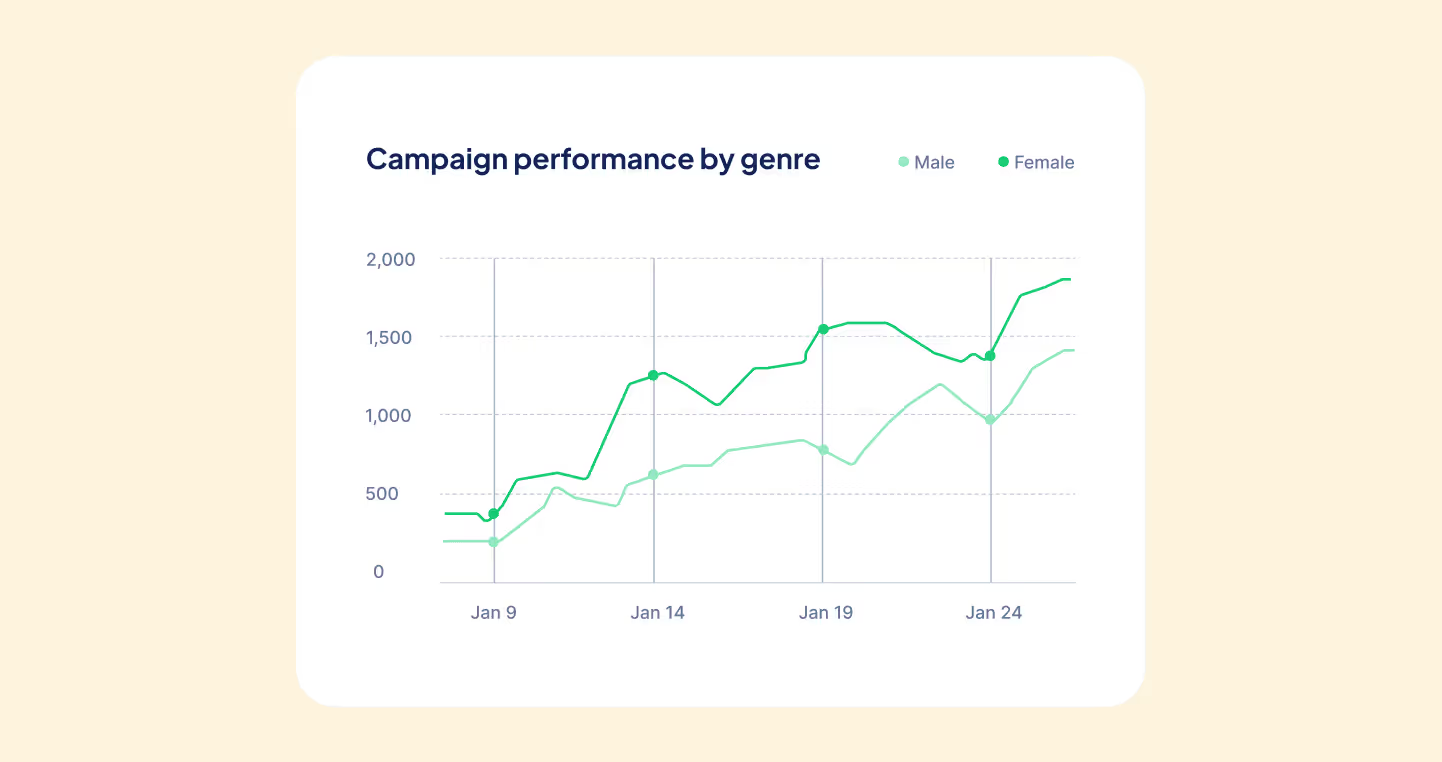CPT Codes for Therapy: A Guide to Billing and Reimbursement
In this blog we dive into what CPT codes are, about the specific ones used for therapy services, and also how the billing process works.

In a survey done in 2022, 23% of people visited a mental health professional. Compared to 2004, where there has been a 13% increase in people visiting mental health professionals.
With more and more people looking to mental health professionals, there has been an increase in the amount of claims billing departments need to submit.
Since there are multiple different reasons for patients to seek therapy, it can make coding a bit more difficult. This is because there are even different Current Procedural Terminology (CPT) Codes for the a lot times the appointment lasted for.
Other things that can vary is the amount of people that are in the session, and most importantly why you are seeing them. That one factor can determine how long they see the physician, and who they see.
So, let’s dive into what CPT codes are, about the specific ones used for therapy services, and also how the billing process works.
What are CPT Codes?
Before diving into what CPT codes we use for therapy, let's go over what CPT codes are.
CPT stands for Current Procedural Terminology, and is a part of a standardized system, first created by the American Medical Association (AMA). CPT codes exist in hopes to help streamline the billing and documentation process in healthcare.
CPT codes are universally known by all billing and insurance professionals. When the billing department receives documentation detailing what happened in the appointment, they will assign a CPT code to the services provided. Once they assign a CPT code to all of the services provided, they send it to the patient's insurance company.
Once the insurance company receives the bill with CPT Codes, it makes it easier for them to understand what happened in the appointment without reading the notes. CPT codes help streamline the billing process, but it also helps decrease the chance for errors to occur.
There are millions of different CPT codes that get used during billing. Okay, maybe a million is an overexcitation, but there are a lot of them. More like hundreds. That is why it is so important for the billing department to know the CPT codes attached to the services.
CPT codes change all the time, so ensuring you keep your staff updated with those changes is vital. In 2025, there are 420 overall changes. These changes include 17 new telemedicine codes, and 33 new codes. If your staff isn't aware of these changes and file a claim with old codes, the claim will get denied and sent back to the billing department.
The use of CPT codes helps streamline the billing process, ensuring the physician gets paid as soon as possible. It also decreases the amount of denial codes in your billing department, allowing your employees to deal with other claims faster.
CPT Codes for Psychotherapy
Now that you know what CPT codes are, let's get to the reason you are here. And that is to learn about the CPT codes most commonly used for psychotherapy.
Since there are a large number of reasons you may seek mental health therapy, we are only going to focus on the basics. Or, again, the most common of the CPT codes associated with psychotherapy.
Psychotherapy appointments will vary in length, so each have a different CPT code:
- CPT code 90832 is for regular psychotherapy appointments that last 30 minutes
- CPT code 90834 is for regular psychotherapy appointments that last 45 minutes
- CPT code 90837 is for regular psychotherapy appointments that last 60 minutes
Some patients have family sessions of therapy. Due to this, there is a separate CPT code you must use which differs from a regular appointment.
- CPT code 90874 is used for family sessions that last 50 minutes in total.
The last kind of CPT codes we will work through are crisis psychotherapy appointments. Since mental health does not work on a schedule, sometimes there may be a crisis that requires an emergency appointment.
- CPT code 90839 is used for a crisis psychotherapy appointment which lasts 60 minutes
- CPT code 90840 is used for a crisis psychotherapy appointment which lasts 30 minutes
Depending on the situation at hand, the appointment may run over the 60 minutes. If this does happen, use the CPT code 90840 to charge the additional time. Ensuring your billing department is using the correct CPT codes that properly represent what happened during the appointment is the easiest way to streamline your revenue cycle.
Billing for Psychotherapy
When it comes to filing claims, there are a lot of things that your billing department needs to know before filing.
The most important thing your billing department needs to have before filing, is to have all of the appointments documented. These documentations help provide proof to the insurance company that the service was necessary. It also helps ensure that the CPT code you attach to the claim is correct.
The next thing your billing department needs to make sure of is that the provider is in-network. If not, they must bill the service as out-of-network for the patient.
If a provider is in-network, that means the insurance company must pay the agreed amount position on the bill.
If a provider is out-of-network, that means the insurance provider is not obligated to pay for the bill. And therefore the remaining balance falls onto the patient. The insurance company and the provider are not under a contract with each other.
Ensuring that the patient knows if the provider is in-network or out-of-network before rendering services is important to reducing possible delayed payments. Often, this happens during the initial gathering of insurance information.
When filing this claim, your billing department needs to ensure that all of the patient’s information is correct. If the information is incorrect or missing, this will lead to an immediate denial code to return to the billing department.
Understanding these few things can help reduce any denial codes, avoid delayed patient payments, and speed up revenue cycle management.
Conclusion
With more and more people reaching out to psychotherapists for help directly affects your billing department's job. With the demand for mental health therapy rising, it is also increasing the number of claims that are directly related to therapy. Understanding the use of CPT codes helps make the process easy for everyone involved. The use of proper coding helps ensure that everything is correctly documented, reducing any errors or denial codes.
Although coding for psychotherapist appointments can be difficult, understanding the difference between the codes is step one.
By staying up to date with any of the new codes and/or any changes, you’re inadvertently also helping reduce denials. Ensuring that you are staying vigilant about these changes help avoid further delays.
Ultimately, the right processes in place can help ensure a smooth and easy billing process.
Emphasize your product's unique features or benefits to differentiate it from competitors
In nec dictum adipiscing pharetra enim etiam scelerisque dolor purus ipsum egestas cursus vulputate arcu egestas ut eu sed mollis consectetur mattis pharetra curabitur et maecenas in mattis fames consectetur ipsum quis risus mauris aliquam ornare nisl purus at ipsum nulla accumsan consectetur vestibulum suspendisse aliquam condimentum scelerisque lacinia pellentesque vestibulum condimentum turpis ligula pharetra dictum sapien facilisis sapien at sagittis et cursus congue.
- Pharetra curabitur et maecenas in mattis fames consectetur ipsum quis risus.
- Justo urna nisi auctor consequat consectetur dolor lectus blandit.
- Eget egestas volutpat lacinia vestibulum vitae mattis hendrerit.
- Ornare elit odio tellus orci bibendum dictum id sem congue enim amet diam.
Incorporate statistics or specific numbers to highlight the effectiveness or popularity of your offering
Convallis pellentesque ullamcorper sapien sed tristique fermentum proin amet quam tincidunt feugiat vitae neque quisque odio ut pellentesque ac mauris eget lectus. Pretium arcu turpis lacus sapien sit at eu sapien duis magna nunc nibh nam non ut nibh ultrices ultrices elementum egestas enim nisl sed cursus pellentesque sit dignissim enim euismod sit et convallis sed pelis viverra quam at nisl sit pharetra enim nisl nec vestibulum posuere in volutpat sed blandit neque risus.

Use time-sensitive language to encourage immediate action, such as "Limited Time Offer
Feugiat vitae neque quisque odio ut pellentesque ac mauris eget lectus. Pretium arcu turpis lacus sapien sit at eu sapien duis magna nunc nibh nam non ut nibh ultrices ultrices elementum egestas enim nisl sed cursus pellentesque sit dignissim enim euismod sit et convallis sed pelis viverra quam at nisl sit pharetra enim nisl nec vestibulum posuere in volutpat sed blandit neque risus.
- Pharetra curabitur et maecenas in mattis fames consectetur ipsum quis risus.
- Justo urna nisi auctor consequat consectetur dolor lectus blandit.
- Eget egestas volutpat lacinia vestibulum vitae mattis hendrerit.
- Ornare elit odio tellus orci bibendum dictum id sem congue enim amet diam.
Address customer pain points directly by showing how your product solves their problems
Feugiat vitae neque quisque odio ut pellentesque ac mauris eget lectus. Pretium arcu turpis lacus sapien sit at eu sapien duis magna nunc nibh nam non ut nibh ultrices ultrices elementum egestas enim nisl sed cursus pellentesque sit dignissim enim euismod sit et convallis sed pelis viverra quam at nisl sit pharetra enim nisl nec vestibulum posuere in volutpat sed blandit neque risus.
Vel etiam vel amet aenean eget in habitasse nunc duis tellus sem turpis risus aliquam ac volutpat tellus eu faucibus ullamcorper.
Tailor titles to your ideal customer segment using phrases like "Designed for Busy Professionals
Sed pretium id nibh id sit felis vitae volutpat volutpat adipiscing at sodales neque lectus mi phasellus commodo at elit suspendisse ornare faucibus lectus purus viverra in nec aliquet commodo et sed sed nisi tempor mi pellentesque arcu viverra pretium duis enim vulputate dignissim etiam ultrices vitae neque urna proin nibh diam turpis augue lacus.




